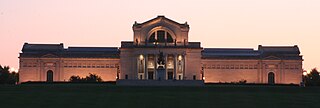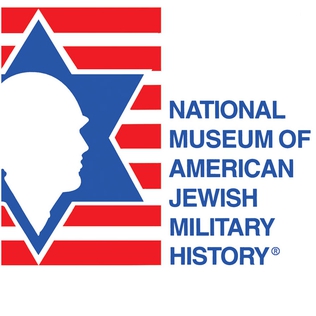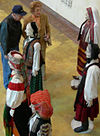
The Museum of History & Industry (MOHAI) is a history museum in the South Lake Union neighborhood of Seattle, Washington, United States. It is the largest private heritage organization in Washington state, maintaining a collection of nearly four million artifacts, photographs, and archival materials primarily focusing on Seattle and the greater Puget Sound region. A portion of this collection is on display in the museum's galleries at the historic Naval Reserve Armory in Lake Union Park.

The Saint Louis Art Museum (SLAM) is one of the principal U.S. art museums, with paintings, sculptures, cultural objects, and ancient masterpieces from all corners of the world. Its three-story building stands in Forest Park in St. Louis, Missouri, where it is visited by up to a half million people every year. Admission is free through a subsidy from the cultural tax district for St. Louis City and County.

The Corcoran Gallery of Art is a former art museum in Washington, D.C., that is now the location of the Corcoran School of the Arts and Design, a part of the George Washington University.

Cooper Hewitt, Smithsonian Design Museum is a design museum housed within the Andrew Carnegie Mansion in Manhattan, New York City, along the Upper East Side's Museum Mile. It is one of 19 museums that operate within the Smithsonian Institution and is one of three Smithsonian facilities located in New York City, the other two being the National Museum of the American Indian's George Gustav Heye Center in Bowling Green and the Archives of American Art New York Research Center in the Flatiron District. Unlike other Smithsonian museums, Cooper Hewitt charges an admissions fee. It is the only museum in the United States devoted to historical and contemporary design. Its collections and exhibitions explore design aesthetic and creativity from throughout the United States' history.

A kilim is a flat tapestry-woven carpet or rug traditionally produced in countries of the former Persian Empire, including Iran, the Balkans and the Turkic countries. Kilims can be purely decorative or can function as prayer rugs. Modern kilims are popular floor coverings in Western households.

The Wolfsonian–Florida International University or The Wolfsonian-FIU, located in the heart of the Art Deco District of Miami Beach, Florida, is a museum, library and research center that uses its collection to illustrate the persuasive power of art and design. For fifteen years, The Wolfsonian has been a division within Florida International University.
An oriental rug is a heavy textile made for a wide variety of utilitarian and symbolic purposes and produced in "Oriental countries" for home use, local sale, and export.

Shelburne Museum is a museum of art, design, and Americana located in Shelburne, Vermont, United States. Over 150,000 works are exhibited in 39 exhibition buildings, 25 of which are historic and were relocated to the museum grounds. It is located on 45 acres (18 ha) near Lake Champlain.
George Hewitt Myers was an American forester and philanthropist.

The Huntington Museum of Art is a nationally accredited art museum located in the Park Hills neighborhood above Ritter Park in Huntington, West Virginia. Housed on over 50 acres of land and occupying almost 60,000 square feet, it is the largest art museum in the state of West Virginia. The museum's campus is home to nature trails and the C. Fred Edwards Conservatory, a subtropical and tropical plant conservatory. The museum's collection includes American and European paintings, sculptures, prints, and drawings, as well as glass pieces manufactured in West Virginia and the Ohio Valley, American folk art, Chinese and Japanese decorative objects, Haitian art, firearms, and decorative arts from the Near East. In addition to its permanent collections, the museum hosts traveling exhibitions and houses the James D. Francis Art Research Library, the Grace Rardin Doherty Auditorium, and five art studios where artists in residence are periodically hosted and classes are held. The Huntington Museum of Art holds one of the largest collections of art in the state of West Virginia.
Armenian Museum of America (AMA), located in Watertown, Massachusetts, United States, is an institution that has the largest collection of Armenian artifacts in North America.

Azerbaijani carpet is a traditional carpet (rug) made in Azerbaijan. The Azerbaijani carpet is a handmade textile of various sizes, with a dense texture and a pile or pile-less surface, whose patterns are characteristic of Azerbaijan's many carpet-making regions. Traditionally, the carpets were used in Azerbaijan to cover floors, decorate interior walls, sofas, chairs, beds and tables.

A Turkmen rug is a type of handmade floor-covering textile traditionally originating in Central Asia. It is useful to distinguish between the original Turkmen tribal rugs and the rugs produced in large numbers for export mainly in Pakistan and Iran today. The original Turkmen rugs were produced by the Turkmen tribes who are the main ethnic group in Turkmenistan and are also found in Afghanistan and Iran. They are used for various purposes, including tent rugs, door hangings and bags of various sizes.

The National Museum of American Jewish Military History (NMAJMH) was founded September 2, 1958, in Washington, D.C., to document and preserve "the contributions of Jewish Americans to the peace and freedom of the United States...[and to educate] the public concerning the courage, heroism and sacrifices made by Jewish Americans who served in the armed forces." It operates under the auspices of the Jewish War Veterans of the United States of America (JWV), National Memorial, Inc. (NMI), and is located at 1811 R Street NW, Washington, D.C., in the Dupont Circle area, in the same building that houses the JWV National Headquarters.
The Bakhtiari rug, along with other weavings, is a major artform of the Bakhtiari tribe, located in Chahar Mahaal and Bakhtiari, Iran. Since the early 19th century, Bakhtiari rugs have been exported around the world.

Trude Guermonprez, born Gertrud Emilie Jalowetz, was a German]-born American textile artist, designer and educator, known for her tapestry landscapes. Her Bauhaus-influenced disciplined abstraction for hand woven textiles greatly contributed to the American craft and fiber art movements of the 1950s, 60s and even into the 70s, particularly during her tenure at the California College of Arts and Crafts.

Marion Victoria Dorn also known as Marion Dorn Kauffer was a textile designer primarily in the form of wall hangings, carpeting and rugs, however she is also known to have produced wallpaper, graphics, and illustrations. Known for her significant contributions to modern British interiors in particular for her 'sculpted' carpets, she contributed to some of the best-known interiors of the time including the Savoy Hotel, Claridges, the Orion and the Queen Mary. In the late 1930s and early 1940s she created moquette fabric designs for use in London Transport passenger vehicles.

The Montana Museum of Art & Culture, or the MMAC, is a University of Montana art museum in Missoula, Montana with a collection of over 11,000 objects, many of which are of the contemporary American West.
Lia Cook is an American fiber artist noted for her work combining weaving with photography, painting, and digital technology. She lives and works in Berkeley, California, and is known for her weavings which expanded the traditional boundaries of textile arts. She has been a professor at California College of the Arts since 1976.

Faig Ahmed is an Azerbaijani contemporary visual artist who is best known for his surrealist weavings which integrate visual distortions into traditional oriental rugs.






















